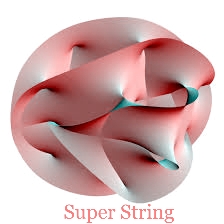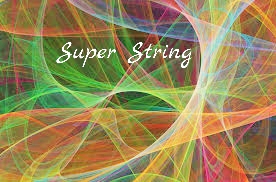WHAT IS SUPER STRING THEORY
The description of string theory and superstring theory in terms of a cellular automaton. In searching for older material, he recently unearthed a letter, written to him by J.G. Russo in March 1993, which contained the details of essentially the same idea concerning the most important case: the bosonic string. Clearly, all priority claims should go to him.
So far, most of our models represented non-interacting massless particles in a limited number of space dimensions. Readers who are still convinced that quantum mechanical systems will never be explained in terms of classical underlying models, will not be shocked by what they have read until now. After all, one cannot do Gedanken experiments with particles that do not interact, and anyway, massless particles in one spacial dimension do not exhibit any dispersion, so here especially, interference experiments would be difficult to imagine. This next chapter however might make him/her frown a bit,we argue that the bulk region of the (super)string equations can be mapped onto a deterministic, ontological theory. The reason for this can be traced to the fact that string theory, in a flat background, is essentially just a one-space, one-time massless quantum field theory, without interactions, exactly as was described in previous sections.
As yet, however, our (super)strings will not interact, so the string solutions will act as non-interacting particles, for theories with interactions.
Superstring theory started off as an apparently rather esoteric and formal approach to the question of unifying the gravitational force with other forces. The starting point was a dynamical system of relativistic string-like objects, subject to the rules of quantum mechanics. As the earliest versions of these models were beset by anomalies, they appeared to violate Lorentz invariance, and also featured excitation modes with negative mass squared, referred to as “tachyons”. These tachyons would have seriously destabilized the vacuum and for that reason had to be disposed of. It turned out however, that by carefully choosing the total number of transverse string modes or the dimensions of the space time occupied by these strings, and then by carefully choosing the value of the intercept a(0), which fixes the mass spectrum of the excitations, and finally by imposing symmetry constraints on the spectrum as well, one could make the tachyons disappear and repair Lorentz invariance It was then found that, while most excitation modes of the string would describe objects whose rest mass would be close to the Planck scale,a very specific set of excitation modes would be massless or nearly massless. It is these modes that are now identified as the set of fundamental particles of the Standard Model, together with possible extensions of the Standard Model at mass scales that are too large for being detected in today’s laboratory experiments, yet small compared to the Planck mass.
A string is a structure that is described by a sheet wiped out in space time, the string ‘world sheet’. The sheet requires two coordinates that describe it, usually called σ and τ . The coordinates occupied in an
n = d + 1 dimensional spacetime,
temporarily taken to be flat Minkowski spacetime, are described by the symbols
Xμ(σ,τ), μ = 0, 1,...,d.
.....Fiza Engineer................Sk najmul....
...Thank you...



0 comments:
Post a Comment
Please do not enter any spam link in the comment box.